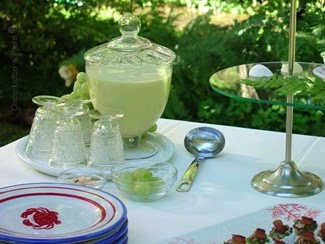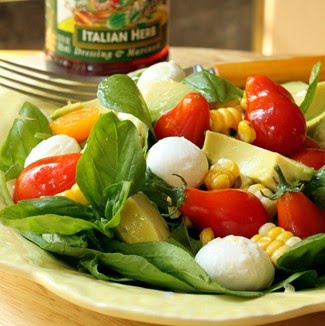 Actually the marinara isn't 25 years old, but my memory of learning this technique is.
Actually the marinara isn't 25 years old, but my memory of learning this technique is.I remember the day well, my mother and I attended a cooking class presented by the executive chef from a prestigious San Francisco Bay Area restaurant where we would dine for special occasions.. The time flew by as the large, silver haired gentleman demonstrated several recipes for us, while he told stories of his life.
This is the gem I consider the treasure of that day; it is recipe of his that I have made most often throughout the years, each time I do my mind skips back to that rainy spring day sitting beside my mom in Arturo's cooking class.
This is the gem I consider the treasure of that day; it is recipe of his that I have made most often throughout the years, each time I do my mind skips back to that rainy spring day sitting beside my mom in Arturo's cooking class.
Arturo's marinara is made a little differently than most I've seen, although it contains no unusual ingredients. Something about the technique seems to develop and concentrate the sugars in the canned tomatoes, mellowing the bitterness. It is the way his grandmother taught him. Undoubtedly she would have used home canned tomatoes, but it works perfectly well with commercially canned tomatoes.
 Simple, ordinary ingredients produce outstanding results.
Simple, ordinary ingredients produce outstanding results.Canned whole tomatoes (Two 1 pound 12 ounce cans, will yield one quart of marinara sauce when prepared this way)
Olive oil
Fresh or dried herbs
Garlic
Salt
Freshly ground black pepper
Place the contents of both cans of tomatoes into a blender or food processor (I doubt that Arturo's grandmother had access to either, but we didn't question him.) It's a good idea to place the pureed tomatoes within easy reach of the pan, along with a ladle (one with a 4-ounce capacity is perfect) near your cooktop where the cooking will take place.
 In a large shallow, non-reactive pan heat two tablespoons of olive oil over medium heat. When the oil is hot add 5 or 6 whole, peeled cloves of garlic.
In a large shallow, non-reactive pan heat two tablespoons of olive oil over medium heat. When the oil is hot add 5 or 6 whole, peeled cloves of garlic.  Allow them to turn a little deeper golden than this.
Allow them to turn a little deeper golden than this.Stir occasionally to keep from burning, until they are a medium golden brown. At this point you can remove the garlic, as it has flavored the oil nicely, or you can leave them in the pan and proceed with the recipe, removing them later. (I usually leave them in and fish them out later.)

Add the herbs, I usually use dried (as fresh are only available from my garden in late spring & summer here.) Stir quickly, just long enough for them to release their oils.
Dried red chili flakes could be added at this point if you prefer a spicy sauce.
Then add one ladle of pureed tomatoes to the pan. Watch for spattering.

Stir to combine letting the tomatoes to come to a boil, stirring so the mixture won't scorch.
Allow to cook and evaporate until the spoon leaves a trail as you pull it across the bottom of the pan before adding the next ladle of tomatoes. All the while retaining a bubbling boil.
 Take your time, allowing each ladleful to evaporate until the mixture thickens, leaving a trail before adding the next.
Take your time, allowing each ladleful to evaporate until the mixture thickens, leaving a trail before adding the next. Continue until all of the pureed tomatoes are used. Add salt and pepper, stir and taste and add more of either if needed.

The entire steamy process, a ladleful at a time, usually takes about 30 minutes.

I always keep my prepared sauce in a 1-quart canning jar. It will keep one week, tightly covered, under refrigeration.
It also freezes beautifully. If you are going to freeze in canning jar, don't fill quite to the top. Leave about 3/4-inch head room to allow for expansion.
I always try to have some in the fridge or freezer.

































Your gorgeous photos and straightforward explanation of the method make me ALMOST feel like I could make this!!
ReplyDeleteHave a delicious day :)
Mary I love the idea..of letting it thicken between ladles.Great idea..I will have to add that step..
ReplyDeleteI often make my sauce by putting the tomatoes through a mill to remove the seeds ..but I think it would be too thick..What do you think?
Great tutorial..Thanks!
Thank you em! If you try it I hope it doesn't disappoint. :)
ReplyDeleteMonique, I've never put the tomatoes through the mill for this recipe, but I have a hunch that would work very well. Maybe I'll try it that way next time, thank you for the suggestion!